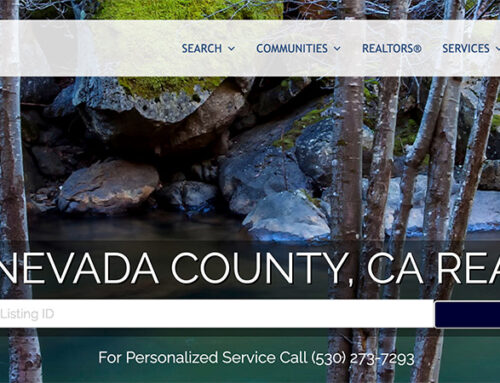After attending a real estate marketing seminar several years ago, Scott Urquhart, CRS, was fired up. The seminar leader’s philosophy was that if marketing is good, then more marketing is better, and the leader encouraged attendees to call and email clients once a month to stay in touch. So Urquhart dove in wholeheartedly. And it was a little awkward.
“I felt like I was overdoing it at that point because I had nothing to say but, ‘Hey. Here I am. I’m here. Just want to give you a quick call.’ And I could feel them [thinking], ‘Okay. We get the point, Scott.’ So, I backed off,” he says.
Today, the REALTOR® and broker associate with Troop Real Estate Inc., in Camarillo, California, has refined his system to target clients with appropriate communication at varying intervals. He has roughly 330 contacts in his database of current and previous clients, referral sources and “strong leads.” He parses communication based on the type of contact. Current clients hear from him a few times each week. He mails a branded calendar to his entire list around January 1. “Just listed” postcards go to prospects and former clients he thinks might be interested in new property listings. He tries to call former clients twice a year and mails a newsletter or notepad to his list quarterly. Twice a year, he sends an email newsletter and spends an hour a day posting to Facebook and Twitter. He’s arrived at this system by trial and error, but says he’d rather err on the side of communication that’s a bit too frequent — as long as clients aren’t objecting or annoyed — rather than have people forget about him and risk losing their business.
The 2013 National Association of REALTORS® (NAR) Member Profile revealed that REALTORS® use a variety of communication methods. Members overwhelmingly use email (92 percent) and phone (90 percent) to communicate with their clients and prospects. Texting, social media, and personal and company websites are other vehicles REALTORS® use to keep in touch. But with all of these communication vehicles, the question remains: Where is the line between effective communication and driving clients and prospects away with too-frequent messaging?
A FINE LINE BETWEEN INFORMATION AND SPAM
Striking the right communication balance with clients and prospects depends on where they are in the decision-making process, as well as how and when they prefer to be contacted, says consultant Chris Mulvaney, president of CMDS, a Middletown, New Jersey, marketing firm that works with real estate companies. While you should experiment with frequency to find what works best for you, he recommends the following schedule:
Leads: When a new listing or buyer lead comes in, the person should be contacted as soon as possible, Mulvaney says. The contact should receive as much follow-up as necessary to secure the person as a client.
Current clients: It’s a good idea to keep in “constant contact” with current clients. Update listing clients frequently on any prospective buyer or marketing activities. Buyers should be receiving regular updates about possible properties for consideration or the status of their transactions.
Recent clients: Once a transaction has closed, send a follow-up note or small gift to clients to thank them for their business. Add them to your general list, which includes clients, prospects, referral sources and other professional contacts.
|
Reach out and Touch Someone According to the 2013 NAR Member Profile, members are actively communicating with their clients through a variety of formats: |
|
|---|---|
| Company website | 94% |
| 92% | |
| Telephone | 90% |
| Text messaging | 74% |
| Personal website | 64% |
| Social media and professional networking sites | 56% |
| Personal blog | 12% |
General list: A good foundation communication piece is a quarterly newsletter sent out by email or mail, Mulvaney says. In addition, try to connect with your list members on social media to keep them apprised of the content you post there. Facebook, Twitter, LinkedIn, Instagram and Pinterest can all be useful communication tools. In addition, don’t be afraid to send email or postcard mailings with new listing updates, relevant market data or general advice such as articles on how to choose or sell a home on a regular basis — perhaps two to three times per month. Experiment to determine the frequency that generates the best response.
Pam Amato, CRS, a broker associate with Coldwell Banker Grass Roots Realty in Grass Valley, California, doesn’t abide by a regular schedule, but she does have what she calls a “high-touch business.” She doesn’t use email or mailers, but prefers to contact prospects by phone and connect with them on her personal Facebook page. As a solo practitioner, she says a very personal approach has worked for her. Because she stays in touch with her previous clients, calling them periodically, they regularly refer friends and relatives to her, she says.
“I think because I’m so genuine, they’ll respond, ‘Oh, I have a friend who’s looking’ or ‘Can you call my neighbor? I think they’ve talked about selling,’” she says. “I know there are a lot of people who send cards on a regular basis to be top of mind. It’s just not how I work.”
DON’T GENERALIZE — CUSTOMIZE
Others prefer a more customized approach. Karen Villa Schweinfurth, CRS, a broker at RE/MAX Northwest REALTORS®, Inc. in Bothell, Washington, makes a point during the first meeting with prospects to find out exactly the preferred form and frequency of communication. Some current clients like weekly status updates, while others prefer to be contacted several times each week, even if there’s nothing new to report. Some clients prefer email, while others prefer telephone or text messaging.
Schweinfurth works mostly by referral, so she doesn’t have a drip email or postcard marketing campaign, although she is active on Facebook, LinkedIn and Twitter, where she provides information about the market, her listings, and her personal hobbies and interests. On Facebook, she has both a personal and a REALTOR® page. She typically posts to her Facebook pages three or four times each day.“
Gourmet cooking is my hobby, and I post about food and, of course, my grandson on my personal page, as well as real estate information. My friends and clients see my personal page and comment on my updates, which often leads to referrals from them,” she says.
Bob Leonard, CRS, an associate broker with RE/MAX Associates in San Antonio, isn’t a fan of email because it’s “too easy to delete,” he says. But, like Schweinfurth, he spends some time up front finding out about his clients’ communication preferences. Many are advocates of text messaging, so Leonard finds himself using that and telephone calls most frequently. He says the key is to pay attention to what your clients and prospects prefer, both in terms of format and frequency.
MAKING IT WORK FOR YOU
Leonard is a fan of snail mail and sends a monthly newsletter that includes market statistics. He also periodically inserts a small gift or discount card as an incentive to open the newsletter, he says. That combination of relevant information and an incentive yields several phone calls after each mailing thanking him for sending it, he says.
“I know some mailings are going to end up in the circular file along with junk mail. But I think a higher percentage are opened and stay around a few days. And I think that it honestly has longer staying power — it might stay on their kitchen counter for a few days after they open it,” he says.
Regardless of how you’re communicating, Mulvaney says it’s also important to ensure it reflects your business well: An agent’s messages must be consistent with the image they want to project.
“We work with an agency in Upper Montclair, New Jersey, where [their target listing] is about $750,000-plus. So, the messaging isn’t price-based, it’s more about value and area-specific information, and it’s pretty congruent from channel to channel,” Mulvaney says.
It comes down to adding value, he says. Whether you’re sending mail, calling on the phone or sharing information on social media, if you’re delivering information that is useful to your target audience, frequency becomes less of an issue than if you’re just sending out self-promotion without anything of value to your customers and prospects.
Even after his own experience with contact overkill, Urquhart says it’s important to stay in front of your clients and prospects. While he did slow the frequency of his efforts after he sensed that monthly phone calls and mailings were too much, he still tries to communicate with his audience frequently.
“Trust me, clients [and prospects] like you to contact them. Once in a while you could overdo it and irritate them, but they want you to contact them. And again, if you’re going to err, do too much versus not enough. Most agents don’t do enough prospecting or contacting rather than too much,” he says.
Home – Where your story begins…
To learn more about how Coldwell Banker Grass Roots Realty can help you buy or sell a home, please call one please call one of our four offices in:
Grass Valley Office at 530-273-7293
855 Sutton Way, Grass Valley, CA 95945
Nevada City at 530-265-3282
108 Union Street, Nevada City, CA 95959
Penn Valley at 530-432-1131
11364 Pleasant Valley Rd, Penn Valley, CA 95946
South County/LOP at 530-268-1575
10193 Combie Rd, Auburn, CA 95602





